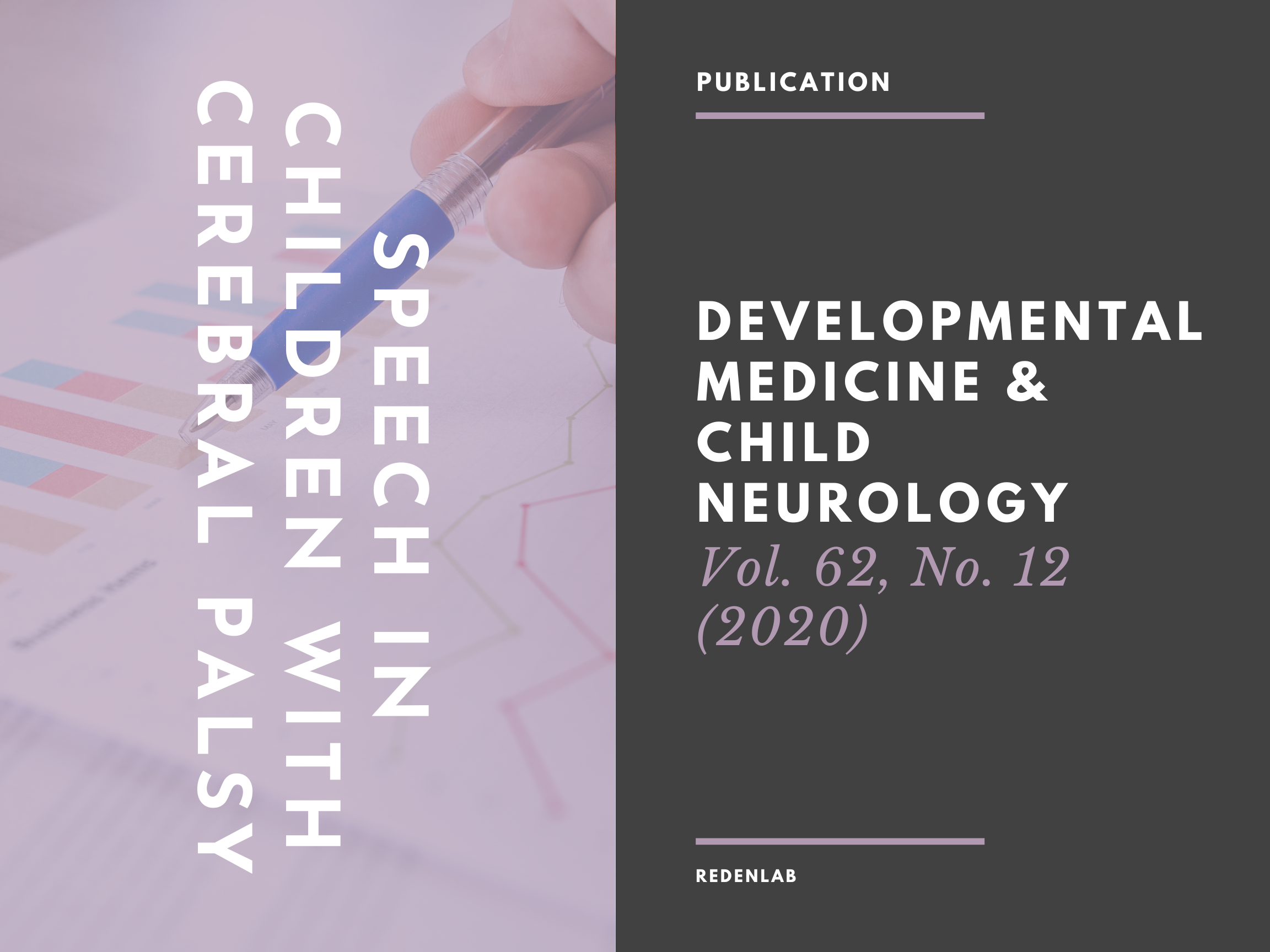Speech in children with cerebral palsy

To examine the frequency, characteristics, and factors associated with speech delay and disorder in a community sample of children with cerebral palsy (CP).
Method
Participants were 84 children (37 females, 47 males; aged between 4y 11mo–6y 6mo) with CP identified through a population‐based registry. Speech and oromotor function were systematically evaluated to provide a differential diagnosis of articulation, phonological, and motor speech disorders.
Results
In total, 82% (69/84) of participants had delayed or disordered speech production, including minimally verbal presentations (n =20). Verbal participants (n =64) presented with dysarthria (78%), articulation delay or disorder (54%), phonological delay or disorder (43%), features of childhood apraxia of speech (CAS) (17%), or mixed presentations across these conditions. Speech intelligibility was poorest in those with dysarthria and features of CAS. Speech delay or disorder in verbal participants was associated with language impairment (p =0.002) and reduced health‐related quality of life (p =0.04) (Fisher’s exact test). Poorer speech accuracy (i.e. lower percentage consonants correct) correlated with greater impairments in both language (p <0.001) and oromotor function (p <0.001) (Spearman’s test).
Interpretation
The speech profile of children with CP is characterized by impairment at multiple levels of speech production (phonetic, cognitive‐linguistic, neuromuscular execution, and high‐level planning/programming), highlighting the importance of a personalized differential diagnosis informing targeted treatment.
Click here for more details
